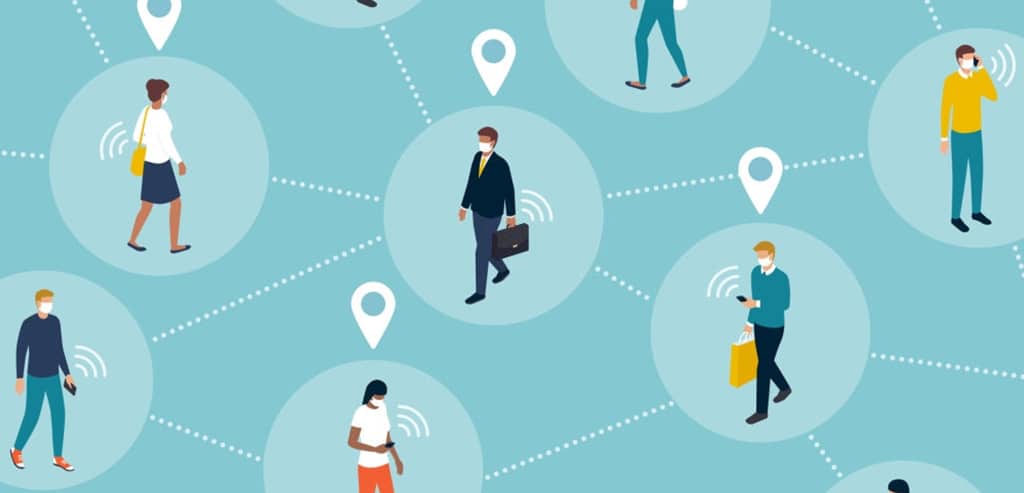If you’re reading this, you’re probably among the many businesses around the world faced with the daunting task of reopening your company’s physical locations. And, rightfully, you’re likely facing a mix of emotions. We’ve spoken with a number of business executives and one of the biggest struggles they’re up against is finding the safest way to bring employees back to work in the wake of COVID-19. Fortunately, organizations are banding together to provide tools that will help make the transition smoother and safer.
Virtual PPE is a new kind of management platform equipped with tools to help assess and manage operational risks. One of the primary functions of the platform uses contact tracing technology, a proven method for slowing the spread of disease. Unlike government-sponsored large-scale contact tracing systems, however, Virtual PPE does not collect and store data in a centralized database—meaning the platform not only delivers risk mitigation where it’s needed most, but also maintains the highest standards of privacy.
What is Contact Tracing?
Traditionally, contact tracing is a method by which public health staff work with patients to recall everyone they had contact with during the window of time when they may have been contagious. The CDC calls it “a key strategy for preventing further spread of COVID-19.” The primary goal is to identify all potential exposures as quickly as possible. This is often accomplished by public health staff, who work to complete interviews and reach out to potentially exposed contacts via phone to notify them in an effort to slow the spread. With the scale of a situation like COVID-19, automation and technology that can alleviate some of the burden of such efforts may prove to be indispensable.
Contact Tracing with Virtual PPE: Peace of Mind for Employers and Employees
Thanks to Virtual PPE’s symptom tracking and contact tracing— two supportive methods aimed at curbing the spread of disease— businesses and their employees can get back to work with less risk. Virtual PPE has two modules. One is a management platform for the employer, and the other is a resource user interface (employee app) for symptom tracking and proximity alerts. If an employee logs a COVID-19 positive status, or has been in close contact with someone who has or has been otherwise potentially exposed, Virtual PPE sends an alert along with instructions for what to do next.
Leveraging Anonymized Data
The platform was built with privacy in mind, leveraging anonymized data for several key functions:
- To enforce employee distancing, sending alerts if users are too close.
- To map locations while at work, allowing for the retracing of activity if needed, and to inform the need for sanitization or closure in the event of COVID-19 symptoms or diagnosis and allows for selective shut down (as opposed to shutting down entire facilities) and cleaning.
- To produce overall risk scores for employees while they’re at work, as well as scores for the organization as a whole, helping employers continually mitigate risk.
Contact Tracing for Compliance and Liability Management
Virtual PPE provides companies with a complete digitized record that can inform actions in the event that an individual becomes symptomatic, has been potentially exposed to a positive case, or is confirmed medically positive. This record can also be useful for liability purposes. Ultimately, contact tracing with Virtual PPE is designed to help businesses and their workforce retrace activity and communicate critical health and safety information to others. And it does it while still keeping privacy a top priority.
Why is Contact Tracing important?
The philosophy behind contact tracing is quite simple: The sooner you know of a potential infection, the sooner you can isolate, which slows the spread of the virus and fewer people get infected.
To learn more about contact tracing, visit the CDC website. To learn more about Virtual PPE, visit the Virtual PPE website.

